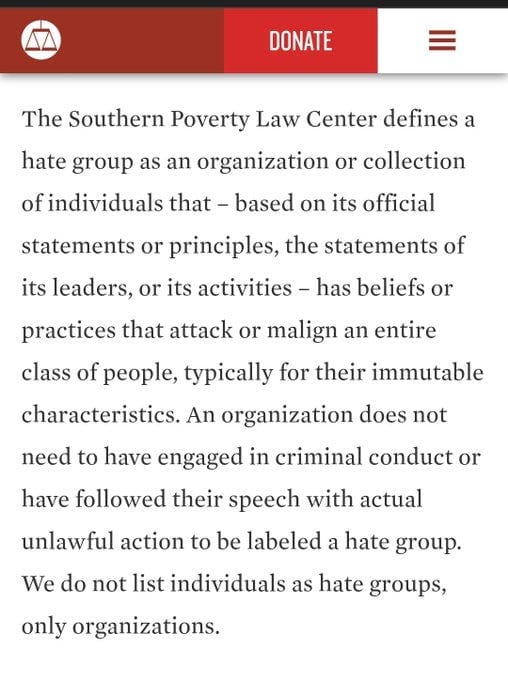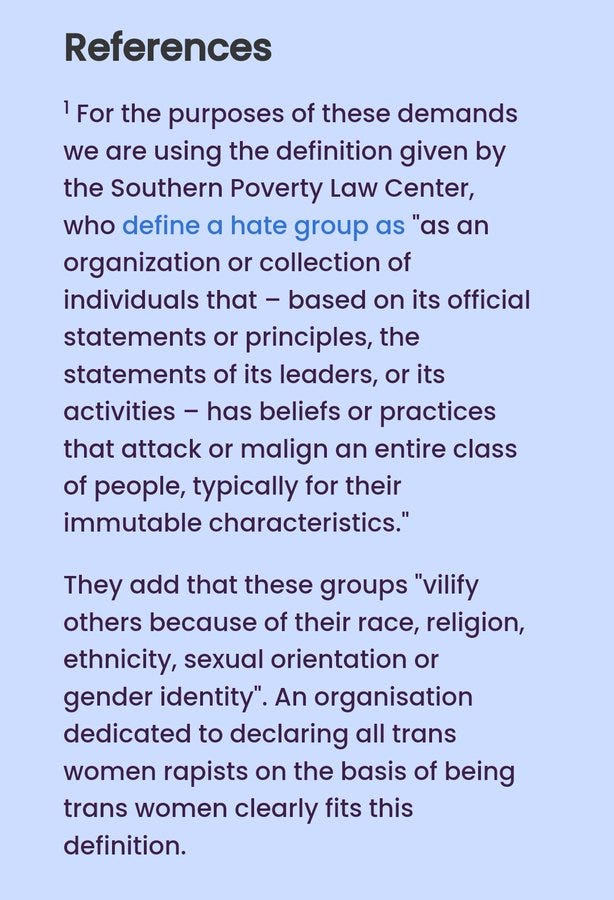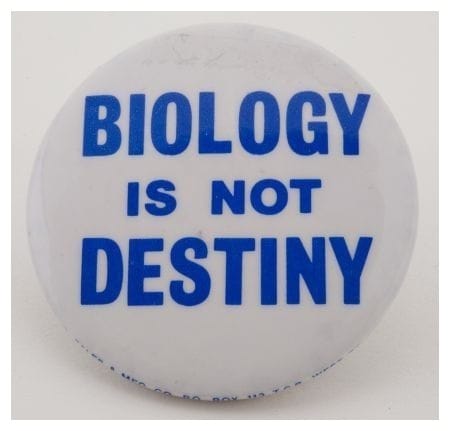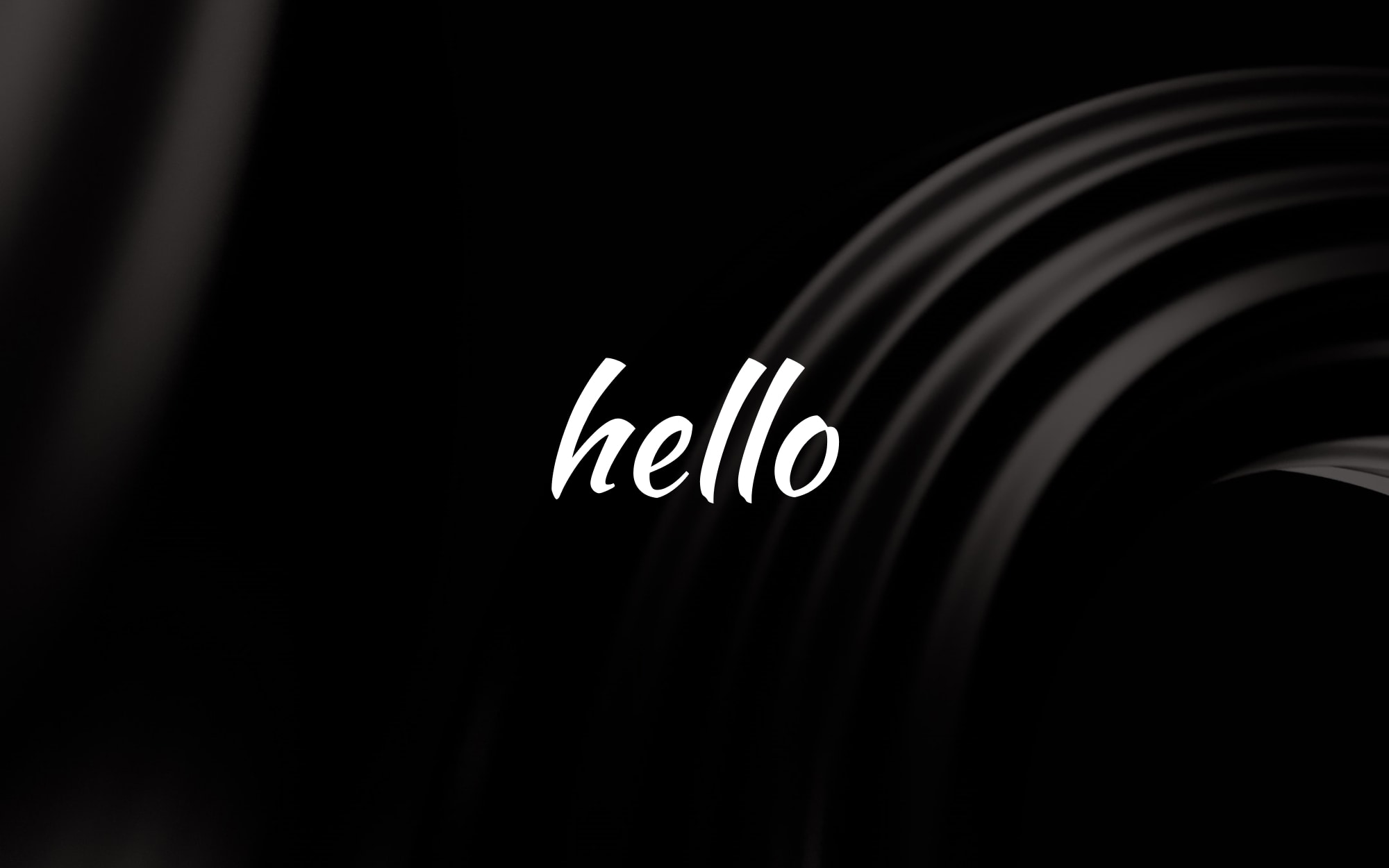On Hate Groups and Language as a Tool
Yesterday I saw someone who is a very long term respected trans activist using the term “Hate Group” to describe the EHRC and this…

Yesterday I saw someone who is a very long term respected trans activist using the term “Hate Group” to describe the EHRC and this absolutely isn’t a call-out post, but it pushed my buttons about an issue I’ve been wrestling with for some months:
How do we start communicating more effectively with the institutional powers which are routinely failing us and welcoming hate groups, some of whom are explicitly set against our existence as trans people, without any sort of sensitivity or comprehension of what they’re even doing?
The EHRC situation is of course a politically driven disaster. This is not a problem of incompetence but of the government having installed regime-friendly bureaucrats to rubber stamp the policies they were already planning to put in place. But setting that aside, the question of “What is a hate group?” and “what are we trying to communicate to our audience when we describe hate organising?” is a really important one. One we have to be clear on ourselves, so that when we communicate with others they are certain what we mean and can make use of the information. And under any reasonable definition of the term, the EHRC is not a hate group, at present.
The most commonly used definition of a hate group is typically taken from the Southern Poverty Law Center and their background in opposition research targeting organisations like the KKK, American Nazi Party and evangelical homophobe groups is unimpeachable. It’s a good definition. In fact Trans Safety Network (who I volunteer for) have used this definition in the past.
We applied this definition when we wrote arguing that Get The L Out were a Hate Group. We didn’t just point to the definition saying “well this seems to fit”. We noted that GTLO are dedicated in their writing, in the report which was linked to by the BBC News website in the Caroline Lowbridge article, explicitly and absolutely falsely, to the claim that all trans women are rapists. The screenshot below shows how we applied it:

If tomorrow, the EHRC were to start demonising trans people, not just saying “Oh, well, we’re not sure we have enough evidence yet to stop conversion therapy” but “trans people are evil and must be stopped” then everything would change about the EHRC’s status as a hate group. But the EHRC do still have lawyers and are not so much an ideological body for destroying the trans community as they are a political appointment implementing the government’s sympathies for their extremely wealthy evangelical funders. And they have lawyers to make sure that what they’re publishing still meets some sort of standard of decency.
Now, to the reason it matters:
- In response to people describing “hate groups”, there is already an well established immediate reflex towards trans accusations of people saying “you just call everyone a hate group”
- Without an evidence-based standard for what constitutes a hate group that claims can be measured against, no process aimed at securing accountability, or at limiting access to resources to groups intending to do harm with them will take anyone seriously.
- To put it very bluntly: casual misuses of this sort of terminology are diluting language used to discuss dangerous, often violent organisations for the sake of a cheap shot at a particular organisation.
This language, these definitions, are tools for reasoning around what level of action is considered necessary in response to threats.
The EHRC are very much at the “protest letters and legal action” level of threat. They are not organising doxing campaigns, or marshalling vigilante groups to do violence, or trying to attack and disrupt support groups for trans people (as we have seen, quite frequently in the form of stealing people’s surgical photos to publish and gawp at and humiliate trans individuals sharing them with peers so that people know what surgical results look like).
Hate groups on the other hand, who are doing all of those things, are closer to the “starve them of resources and stop them recruiting in public anywhere you can” level of threat. They exist largely, sometimes exclusively for the purpose of doing harm, and the only thing to do in response is anything necessary to stop them.
There is a literal and impactful difference between groups which happen to be doing harm, and groups whose purpose is doing harm.
I’m saying this as I work with colleagues on drafting a schema for assessing organisations for their level of transphobia and threat. This will hopefully allow us to more objectively classify in terms of :
- Have they promoted violence?
- Do they ideologically support trans elimination?
- Do they have a pattern of disrupting healthcare?
- Are they involved in or promoting conversion therapy?
Etc etc This is a problem I’ve been deeply engaged with thinking about for a few months now. How do we understand these organisations and how do we deliver a way of talking about them in common with other people such that the harm that they do is clear for all to see, and fundamentally evidenceable.
If I and colleagues publish such a schema and then angry people online go around just checking “yes” to every box for their local council before declaring it scores 10 out of 10 points and is definitely a hate group because they didn’t fund a second trans GP service to meet growing demand and claim that’s the same as trans eliminationist violence it will lose meaning, and descriptive value. Healthcare underfunding certainly does do harm. Some of that harm definitely results in trans people not surviving, on a balance of probabilities. But if our goal is to try and create a way of distinguishing between bad things so that we can focus on stopping the most violent forms of harm, we want to maintain a language that is expressive enough to describe different shades and colours of harm in the middle.
A big part of the power of having clear technical definitions of things rather than simply wishing the opposition into the bad box is that it gains the ability to communicate with third parties the degree to which harmful actors are a danger, with confidence in the measure. We are opening the process of discussing a draft as of today, and will be following something like a Request For Comment drafting process, that solicits responses and input from community user groups. You can find the issue tracker where the public are free to engage with this consultation process here and feed back on what would be useful acceptance criteria for such a definition of a hate group and a tool for classifying levels of threat and risk associated.
We want to make it a transparent process driven by research community expertise, similar to open source standards development process rather than ultra hierarchical approaches, because we understand that to be useful it needs to be applicable and useful for stakeholders.
As a side note: it’s worth pointing out that this sort of schema can lack usefulness in other ways. Police, landlords and bosses can all to a lot of harm to a minority group without ever passing the bar for “hate” and that’s because institutional power has a way of obscuring the harm. This doesn’t become a reason to be more lax about using “hate group” to include them also! It is a reason to be skeptical or at least critical of the value of labelling hate groups when some of society’s most powerful and dangerous institutions do far more harm. That’s also another sort of conversation we should be having explicitly (talking directly about it rather than indirectly) and building the understanding of it into our values going forward. What would be a more useful schema for interpreting organised harm than “hate group”?
Hopefully this little ramble has made it a bit more clear why I have been talking, extensively, about the clunky but more useful concept of “organised harm targeting the trans community” rather than “hate” a lot of the time. I believe that “hate” dates from models developed to fight fringe extremist groups like the KKK, and the various UK fascist splinters and so on, and fails to recognise institutional harm in a useful way that could reveal relationships between eg the EDL & racist news coverage.
I want to get us as a community onto a footing where we are able to speak with confidence and have people have a reasonable degree of trust and understanding in what we are saying about the harms targeting us.


